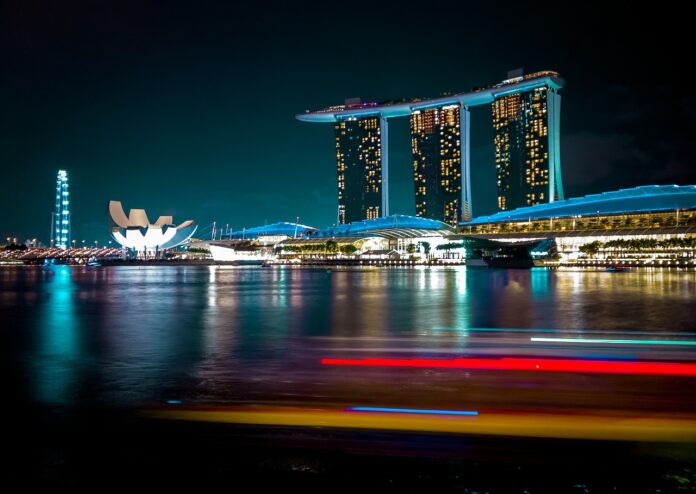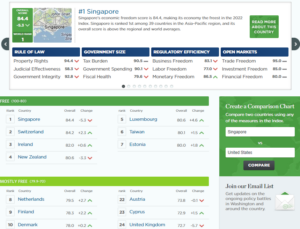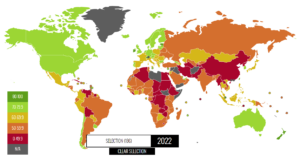Flip in the Top 10 of the Index of Economic Freedom, along with Hong Kong’s disappearance from the radar for the second year in a row. Let’s see which countries topped the Index of Economic Freedom
The SMALLEST are the FREEST
# Economic freedom and where to find it
Economic freedom is a fundamental right of individuals, representing human action in a spontaneous order. It is considered such an important parameter that for over 20 years the Heritage Foundation has been preparing an annual report, measuring each country based on 4 major parameters.
#1 The size of government, which considers tax burden and public spending;
#2 The integrity of the rule of law and judicial performance in protecting property rights;
#3 The level of trade, financial and investment freedom;
#4 The level of judicial efficiency, labor, business, and monetary freedom.
Let’s see the 2022 projections through the analysis of Prof. Paolo Bernardini, holder of the course “States, Economy and Global Markets” at the University of Insubria.
# At the top low population countries and city states
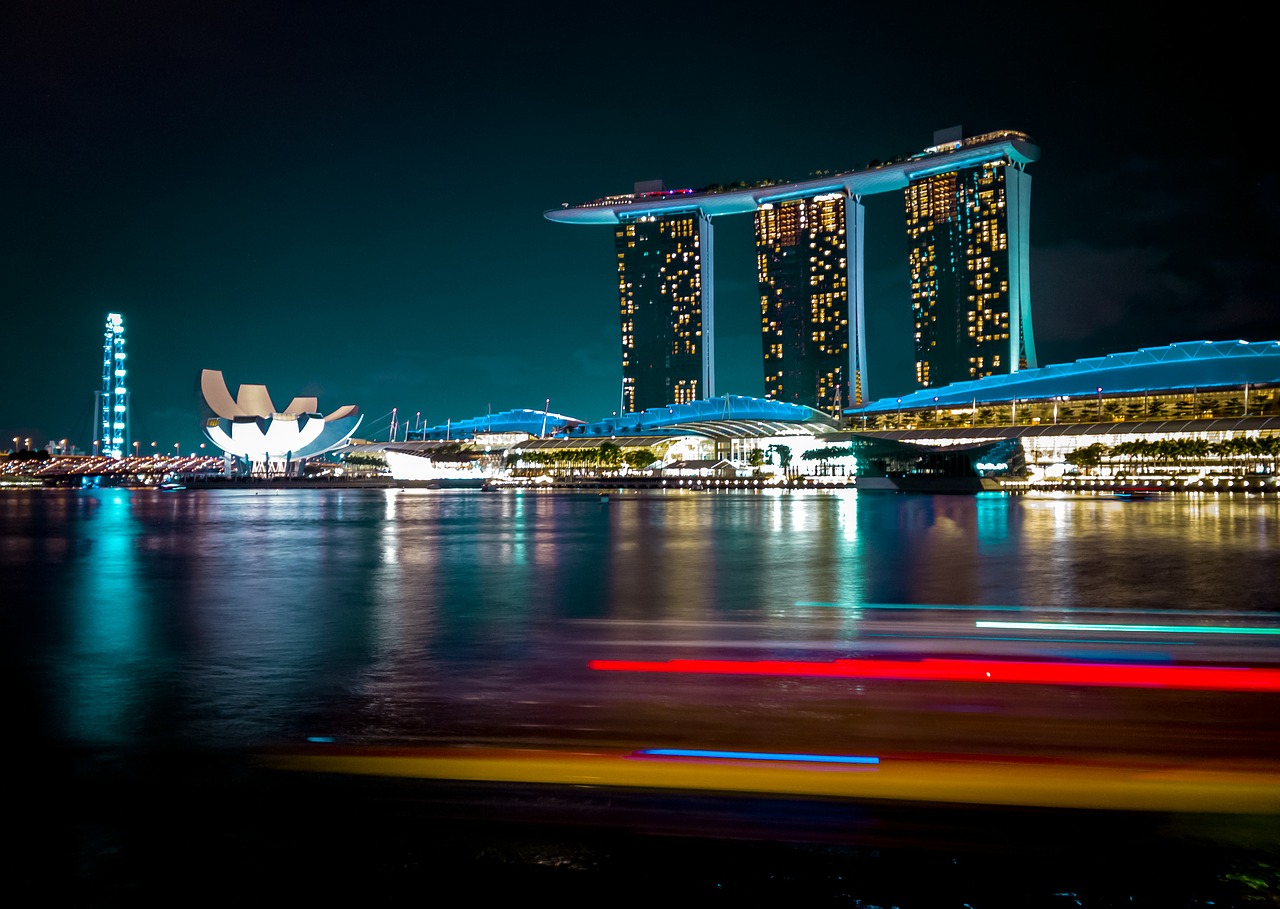
With a score of 84.4, which makes its economy the freest on the planet, Singapore leads the ranking. This is followed by Switzerland and Ireland, then Luxembourg and New Zealand. Estonia, Holland, Finland, and Denmark round out the top 10 for freedom.
The most significant consideration about the top 10 is that they are all small countries or countries with few populations. Including Switzerland, most of these states have less inhabitants than Italy’s most populated region, Lombardy; some countries have the same number of inhabitants as Veneto, or fewer.
The sum of the inhabitants of these 10 countries combined is 78.6 million, which is less than the total population of Germany.
IEE should be interpreted as an index that measures the efficiency of the State, it is certainly not a ranking that considers the natural and absolute parameters of liberalism, for this reason much criticized by the liberal community.
Yet it shows the most interesting fact of all: small states, with few inhabitants, are also the most efficient ones, when compared with the 4 criteria presented at the beginning. It seems that small size is a key characteristic of state agility.
# Where does Italy fit in?
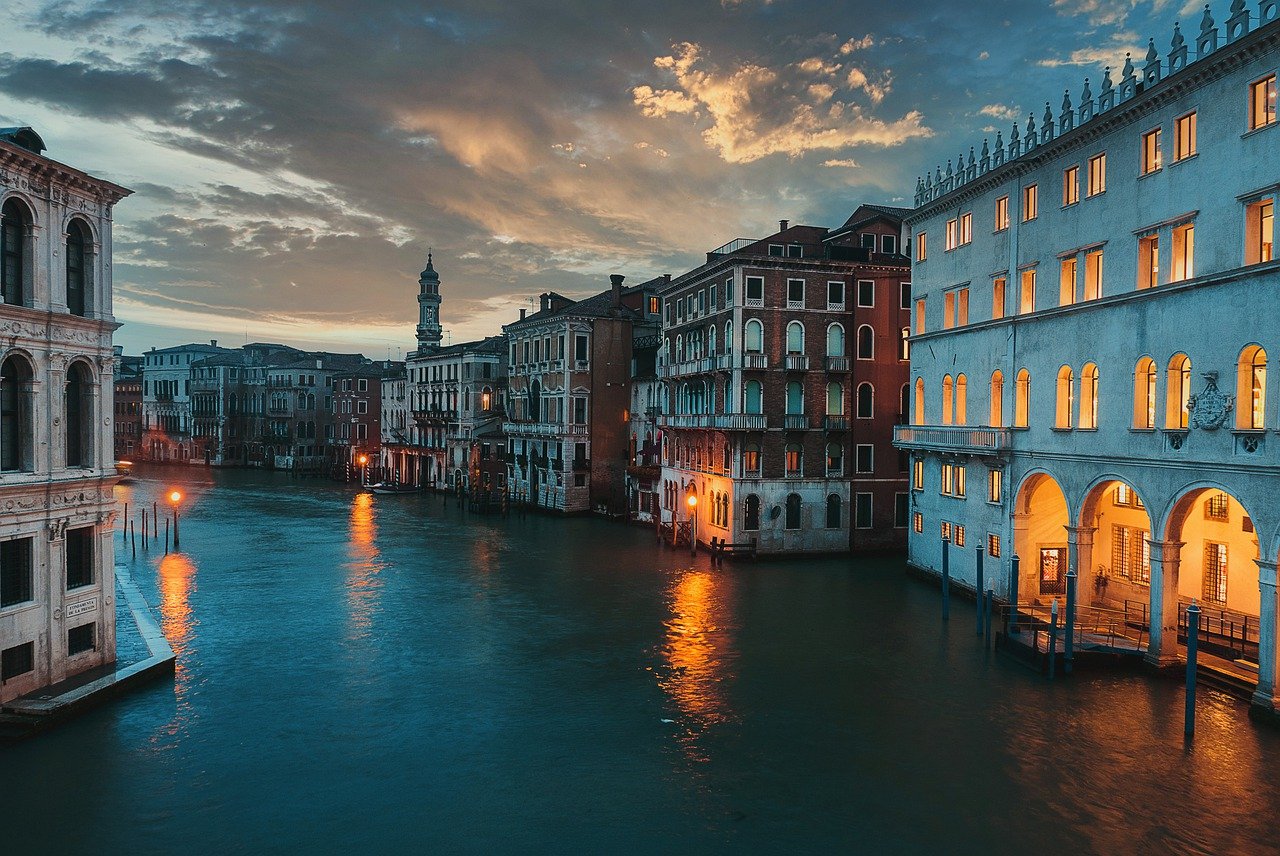
Italy occupies the 57th position, with an overall score of 65.4, placing it in the middle of the Index’s “Moderately Free” zone.
The Heritage Foundation analyzes Italy with its partial metrics, returning an X-ray of a country in which “monetary, trade and investment freedom are strong, but the economy remains heavily burdened by government spending”.
The “bel paese” has posted a steady growth of 2.9 points in the IEE from 2017 to date and, in the analysis sheet, the decrease in the integrity of the government stands out, accompanied by the decrease of its size (precisely).
This is how analysts perceived Italy, but what is Italian sentiment?
# Top10 versus Italy
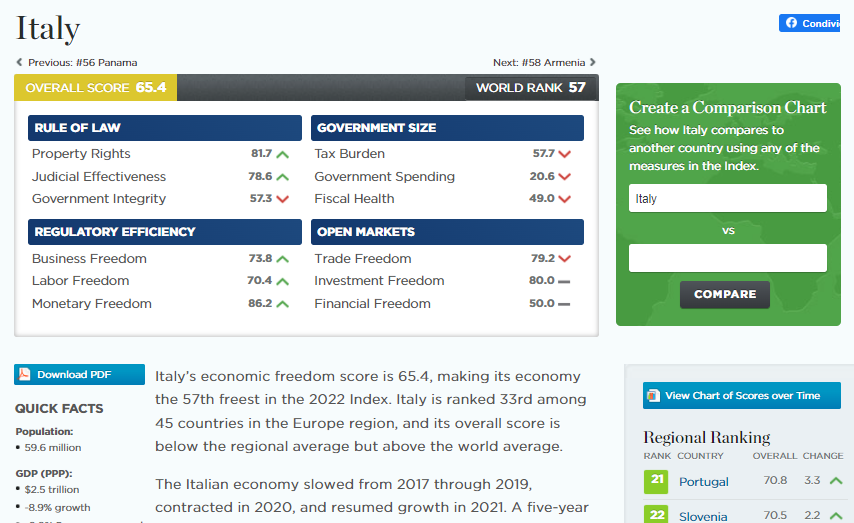
It is impossible to limit oneself to reading the ranking without making comparisons between Italy and those in Top10.
We have already mentioned the comparison of the number of Lombardy inhabitants , comparing it with that of most of the countries in the Top10.
Although it is considered by the Heritage Foundation as a “neutral parameter”, the Italian GDP per person, compared with any of the top 10 positions, balances a bit the picture of the real economy, between that of Heritage and how it is perceived by Italians.
Singapore’s GDP per capita comes close to tripling Italian one; nearby Switzerland is content to double it. Estonia, with its 1.3 million inhabitants, relatively young and born out of the rubble of socialism, now has a GDP/individual that has reached that of Italy; the Czech Republic (21st place in the IEE) has the same GDP per capita as Italy, with the same number of inhabitants as Lombardy.
# Size matters

The real challenge, launched by Prof. Bernardini and which should make us think a lot, is to recall the forecasts that Alberto Alesina and Enrico Spolaore make in “The Size of Nations”, a 2005 volume.
Alesina’s (H Index 103) and Spolaore’s (H Index 24) expectations use economic tools to study states and changes in internal borders and population.
They provocatively argue that «smaller countries may find it easier to respond to citizens’ preferences in a democratic way» Their calculation of the optimal size of a state is not just theoretical but seeks to explain the size of the reality of the country or macro-region being analyzed.
And it does so by also asking this question: Does size matter for economic success? Judging by the result of the IEE 2022, it would seem so.
# Hong Kong missing

Very brief comment on Hong Kong’s disappearance, for the second year in a row.
The Perfumed Port is not only out of the Top10, which it has led for decades, but it is right out of the ranking, which contains 177 countries plus 7 non-ranked. The city-state incorporated with laws and rules determined by the central authority in Beijing, is no longer considered a country, but part of China itself.
Centralization, therefore, is making Hong Kong’s economic freedom lose visibility. Prof. Bernardini is convinced that the same will happen in Taiwan.
We will see.
Continue reading: The dawn of a new humanity?
LAURA LIONTI


